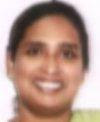By Preetu Nair
04 March, 2005
Gomantak Times
"Who is AIDS?" asked a mother of two in Agassaim, Tiswadi in Goa state of India. She added, "There is no one by that name in the village."
Officially known as being more prevalent among the high-risk groups for HIV/AIDS, Goa, could well be on a short fuse. The HIV is spreading and yet many in the remote villages in Goa have not even heard of the disease.
Since the first reported case of a foreigner with HIV in Goa in 1987, there has been a steady rise in the reported number of persons with HIV/ AIDS. According to a report Containing HIV/AIDS in Goa, about 46 percent of HIV cases detected in Goa are from the talukas of Mormugao and Salcete and another 26 percent from Bardez and Tiswadi. The National AIDS Control Programme (NACP)'s objective is to attain ninety percent awareness levels. But a test drive through rural Goa showed one thing clearly. AIDS is just a name.
While a young, newly married woman from Pillar admits that she has never heard about HIV/AIDS, her husband quips in, "I have seen it on TV but I am not concerned. My wife won't know anything about AIDS. She doesn't watch television and she is not educated."
And the opinion of another young woman in Cacra is no different. "I have never heard about it. I believe no one in our village will be able to help you, as no one knows about the same," she said.
The situation is so bad that when GT asked a college student in Merces "What is AIDS?" she replied, "Anti-Deficiency Something". While her friend replied, "I don't know and I am not even interested in knowing".
When we asked a class IV government employee about AIDS, he replied that he had never heard about it. When told that AIDS is a dreadful disease, he looked confused and concerned. He asked, "How does one get AIDS?"
But the ground reality is quite disturbing, in the last few years there has been a dramatic increase in HIV infection among young women, between the age of 15 and 29. In the year 2004, 50.4 percent of young women were detected with HIV compared to young men. The strikingly higher infection rates among adolescent girls compared to boys in Goa reveal a disturbing trend.
According to the data available with Gomantak Times, in the last three years, the number of young women infected by HIV is more than that of young men. In 2002, 176 young men were infected with HIV were detected, while women were 181. In 2003, the number of females infected by HIV went up by 187, while men were at 148. In 2004, (upto Nov) the women detected with HIV were 117, while male were 115. However, intotality, the number of men infected with HIV is much higher (64.5 percent) compared to women.
The disease is prevalent in all parts of Goa and majority of reports are reported in the four coastal talukas of Goa: Murmugoa, Salcete, Bardez and Tiswadi. In the book, Containing HIV/AIDS In Goa (2003-04) by the Goa State Aids Control Society (GSACS), it mentioned that sexual route is the predominant mode of transmission in Goa and it ranges between 83 to 97 percent. Infection through blood, blood products and infected syringes/needles are negligible and vertical transmission is around 3 to 6 percent.
A source at GSACS said that though many may not admit but a large number of young people are sexually active at a relatively young age, are not monogamous and don't use condoms regularly to ensure protection. In addition to drinking, they experiment with injectable drugs. "However girls are vulnerable not only because of pregnancy but they are more likely to have coerced invariably unprotected sex than boys and they are susceptible biologically to STDs including HIV Infection," the source revealed. And further added, "Inequality between sees makes girls more vulnerable to violence, to sexual abuse and the practice of female genital mutilation."
"There is still lack of information on health issues and discussion of sexual matters with parents is still a taboo. Further, in school we yet to introduce sex education as part of the curriculum. Further many young people do not see HIV/ AIDS as a personal threat and if there is any problem, they, especially young girls avoid going to a doctor," said Wendy Pereira, Deputy Director, GSACS.
Officials at GSACS believe that education is the key and failure to give them sex education and counseling may in fact be a death sentence. "We are going to distribute a book Disha 2000 to all students from standard IX to XII. The book will help students know about themselves, their adolescence and sexuality. The books also talks about the basic facts on HIV and other sexually transmitted diseases. It will dispel myths and clarify misconceptions," said ProjectDirector, Dr PK Ghodge, and GSACS.
The author can be reached at preetunair@yahoo.com
Monday, December 11, 2006
Subscribe to:
Comments (Atom)






